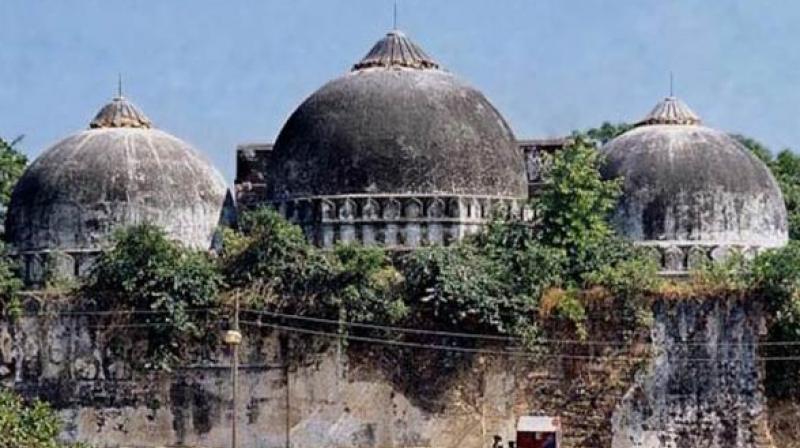Petitioners says Ayodhya means without war'

New Delhi: The Supreme Court will hear on Tuesday a batch of 13 appeals against an Allahabad High Court verdict that directed division of 2.77 acres of land of the disputed Ram Janmabhoomi-Babri Masjid site in Ayodhya into three parts among Hindus, Muslims and the Nirmohi Akhara.
The petitioners, Shyam Benegal, Aparna Sen, Om Thanvi, R.B. Sreekumar, Anand Patwardhan (Ram Ke Naam), Ganesh Devy, Medha Patkar, Aruna Roy, Anil Dharker, Ganesh Devy, Teesta Setalvad, Joy Sengupta, Cyrus Guzder, Ram Rahman, Sohail Hashmi, M.K Raina, to Dr. B.T Lalitha Naik, John Dayal, Suman Mukhopadhyay, Kiran Nagarkar, Kumar Ketkar, Kalpana Kannabiran and others wanted the court to take cognizance of the meaning of the word Ayodhya, a compound word formed by adding together ‘a’ meaning ‘without’ and yudh meaning ‘war’.
They said in Ayodhya, a space should exist for all, without conflict. This voice of peace-loving and conscientious citizens, wanted the court to treat this dispute as one that has a bearing on the fundamentals that this country stands on its Constitution.
“The outcome of this dispute, perpetrated and violent, has the potential to affect the very foundations on which Indian democracy stands,” says the application.
Those who filed the appeals included the Sunni Central Wakf Board, U.P.; the Nirmohi Akhara; the All India Hindu Mahasabha and Bhagwan Shri Ram Virajman.
There are voluminous records, scripts and documents in seven languages, Sanskrit, Pali, Hindi, Persian, Arabic, Punjabi and Urdu which are to be translated into English.
On behalf of Hindus it was argued that having accepted that the disputed site was the birthplace of Lord Ram, there was no reason whey 1/3rd land was to be given to Muslims for construction of a mosque. They wanted that the entire area be granted to the Hindus to facilitate construction of Ram Mandir.
The appeal on behalf of Muslims raised several questions including whether the myth, belief or faith could be substituted by history for the purposes of application of law for the time being in force; whether in view of the fact that devotees of Lord Ram demolished the building during the pendency of their suit, relief could be granted to such a plaintiff; whether the High Court on the basis of belief and faith could have competently decided the issue in the wake of the fact that with respect to the structure prior to December 6, 1992 all supportive evidences were available with effect from 1528 till December 6, 1992 whereas for the evidence prior to the 1528: the religious text and scriptures have been taken into conspectus; Whether the act of the demolition of the structure was an act of vandalism? If the demolition was illegal then certainly the relief was to return all plaints; also if it was an act of vandalism then it should not have been given the seal of approval. It should have been deprecated by al force at command.

